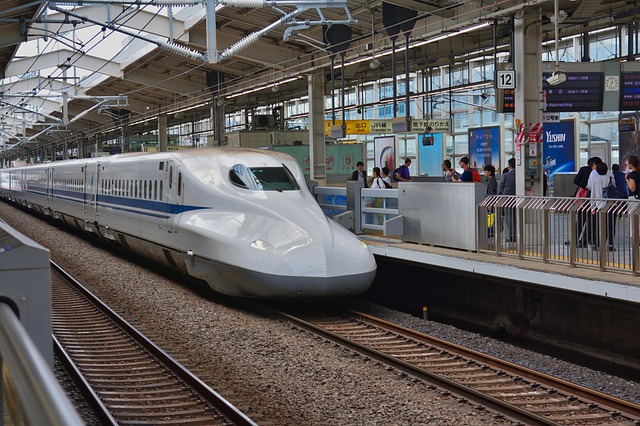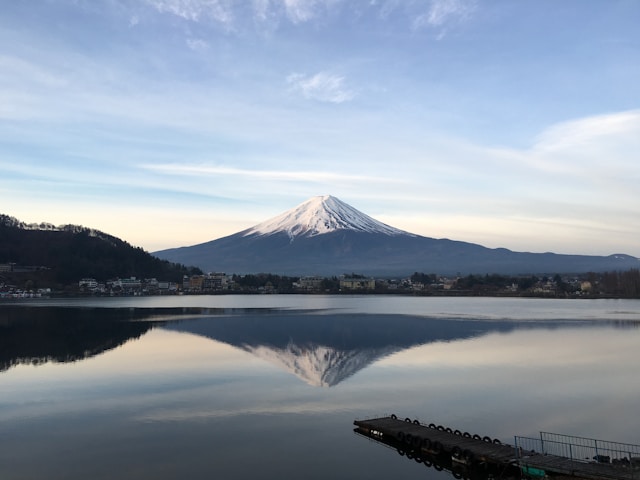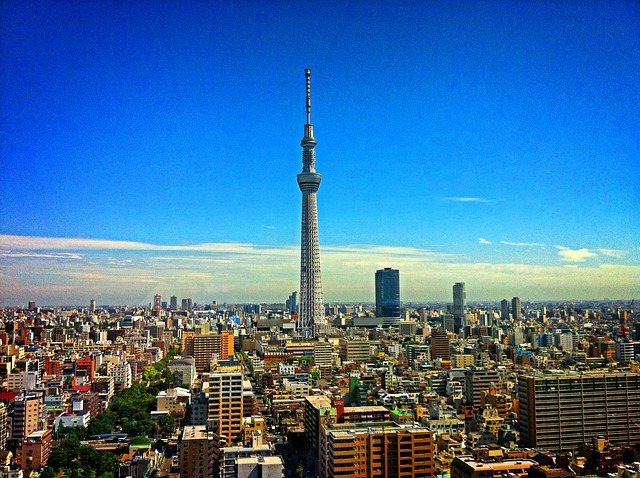
Tokyo: The Capital of Contrasts
At Kyoto, I boarded the Shinkansen and in less than 2.5 hours, arrived at Shinagawa Station in Tokyo. Unlike Europe, Japan requires passengers with oversized luggage to pre-book storage space on bullet trains, ensuring smooth operations. Shinkansen trains are always busy, used extensively by both locals and tourists, making advance planning crucial.
Tokyo, a vast and dynamic metropolis, has endless experiences to offer. I split my stay into two parts, beginning in Odaiba, a modern waterfront area known for its futuristic skyline and open spaces. My first stop was the Tokyo Skytree, where I enjoyed a panoramic view of the city, followed by a visit to Asakusa’s Sensō-ji Temple, one of the most revered temples in Japan.
No trip to Tokyo is complete without visiting TeamLab Planets, an immersive digital art museum with stunning light displays and interactive exhibits. This experience requires prior reservations, but it is an absolute must-see.
For food lovers, Shimbashi is a great place to explore authentic Japanese street food and local delicacies without the hefty price tags of fine-dining restaurants.

A Day Trip to Mount Fuji & Hakone
The next morning, I embarked on a journey to Mount Fuji and Hakone, using a combination of bus, boat and cable car. Mount Fuji, standing at 3776 meters, – is Japan’s highest peak and an iconic symbol of the country. Visitors can only travel up to the 5th station, which sits at 2400 meters—the highest point accessible by road. Those who wish to summit Mount Fuji can only do so in the summer months.
Lunch included the famous Sukiyaki hot pot, a local specialty. Afterward, I boarded the Komagatake Ropeway in Hakone, which offers breathtaking views of Lake Ashi and the surrounding mountains. Hakone is also home to natural hot springs (onsen) and a caldera lake formed by volcanic activity.
Returning to Tokyo, I took time to explore Shibuya, home to the world’s busiest pedestrian crossing and the famous Hachiko Statue, a tribute to Japan’s most loyal dog. Nearby, Takeshita Dori in Harajuku is a bustling shopping street known for its quirky fashion and trendy boutiques, while Omotesando offers high-end luxury shopping.

Tokyo’s History & Hidden Gems
Tokyo, formerly known as Edo, has a rich Samurai history. It was renamed Tokyo when the Emperor moved the capital from Kyoto. The city is home to the Tokyo Imperial Palace, an important cultural landmark.
Some unique experiences in Tokyo include:
- Avatar Robot Café – A futuristic café where robots serve guests.
- Moonwalk Bar (Shibuya) – A self-service bar with over 150 cocktails.
- Shinjuku Golden Gai – A nostalgic alleyway lined with tiny, themed bars.
- Omoide Yokocho (Memory Lane) – A post-war black market turned street food haven.
Tokyo’s transportation system is one of the most efficient in the world. Trains arrive on time to the second and if a delay occurs, railway staff formally apologize to passengers. Even at airports, luggage is meticulously arranged on conveyor belts with handles facing upward for convenience—a testament to Japan’s impeccable organization and hospitality.
Essential Travel Tips: JR Pass & Suica Card
While the JR Pass is a must-have for long-distance travel on the Shinkansen (bullet train) and specific JR-operated routes, another essential card for navigating Japan’s cities is the Suica Card. This rechargeable smart card is incredibly convenient for buses, trains and even small purchases at vending machines and convenience stores. Despite being a highly advanced country, Japan still relies heavily on cash payments, making the Suica Card a practical solution for seamless travel without the hassle of carrying change.
Fascinating Facts About Japan
- Japan has 47 prefectures, each with its own distinct culture, history and landscapes.
- Mount Fuji belongs to a shrine, not a prefecture and is shared between Shizuoka and Yamanashi.
- Golden Week (April 29 – May 4) is Japan’s biggest holiday period, making it the busiest and most expensive time to travel.
- Gambling is prohibited, except for four forms: horse racing, boat racing, bike racing and motorbike racing.
- Mount Fuji erupts every 300 years, though it has been dormant since 1707.
- Japan is home to 8 million gods according to Shinto beliefs.

Final Thoughts on Japan
Despite having traveled extensively , Japan is one of the few places I would gladly revisit. Most destinations leave you feeling satisfied, but Japan always offers more to explore—whether it’s ancient temples, spiritual landmarks, breathtaking landscapes or its unparalleled hospitality. Every town, village and prefecture has a unique story to tell, making Japan a destination that truly stays with you.
If you are planning a visit, four nights in Tokyo alone is just the beginning. From cultural landmarks to cutting-edge experiences, Japan deserves at least a month to fully appreciate its wonders.
Until next time, Japan—I’ll be back!
Planning a trip to Japan? Reach out—I’d be glad to share my personal travel experiences.